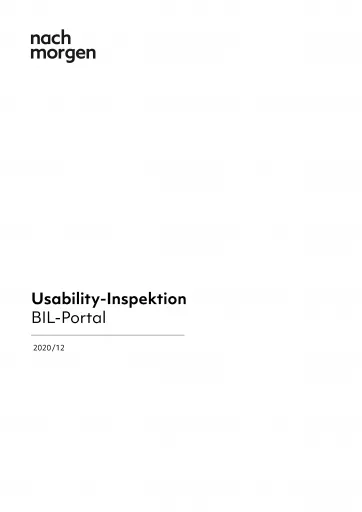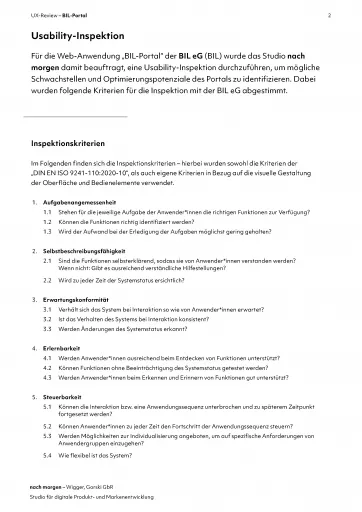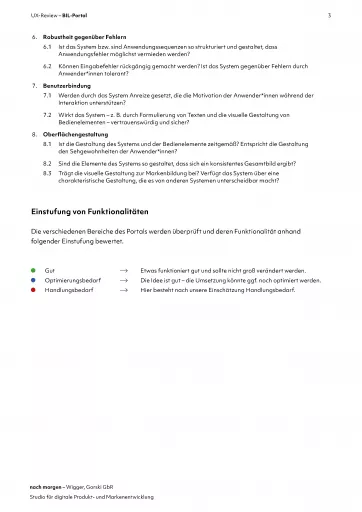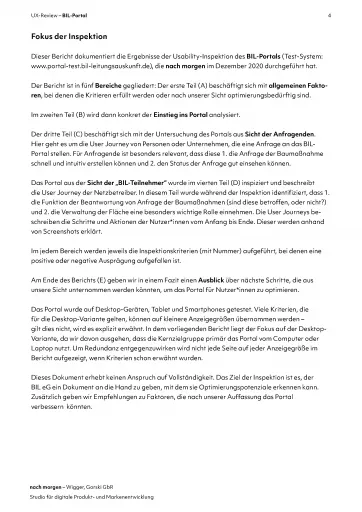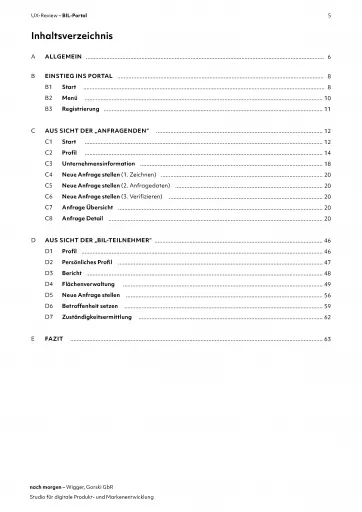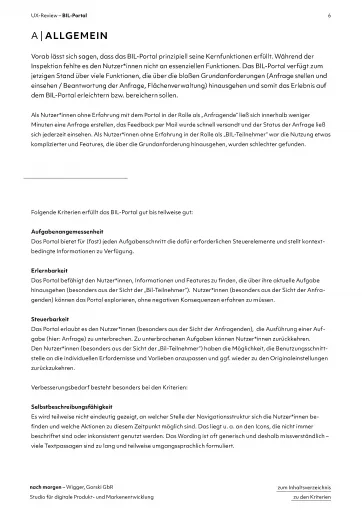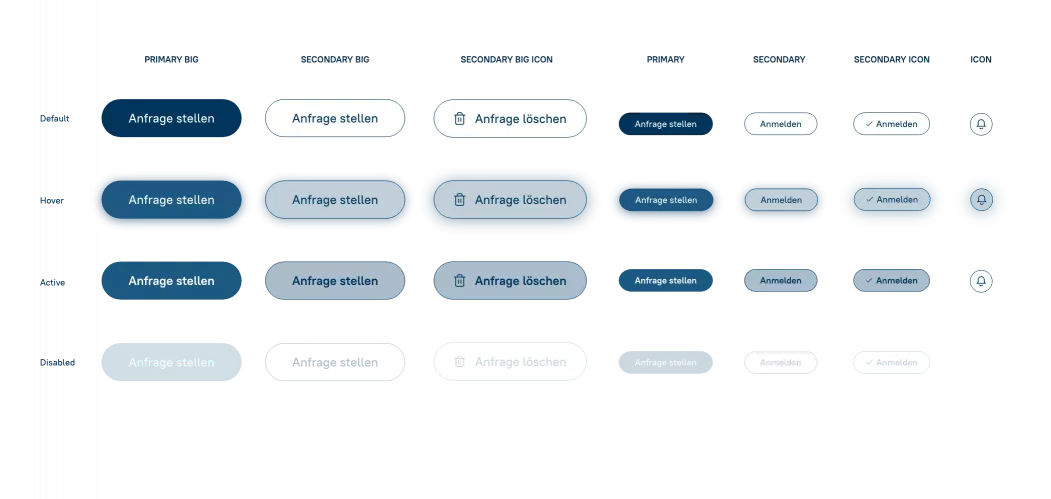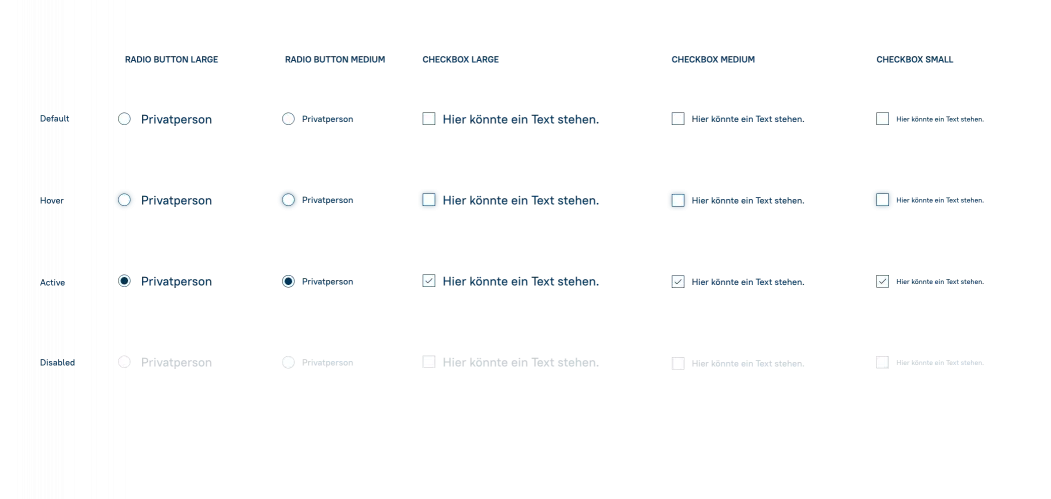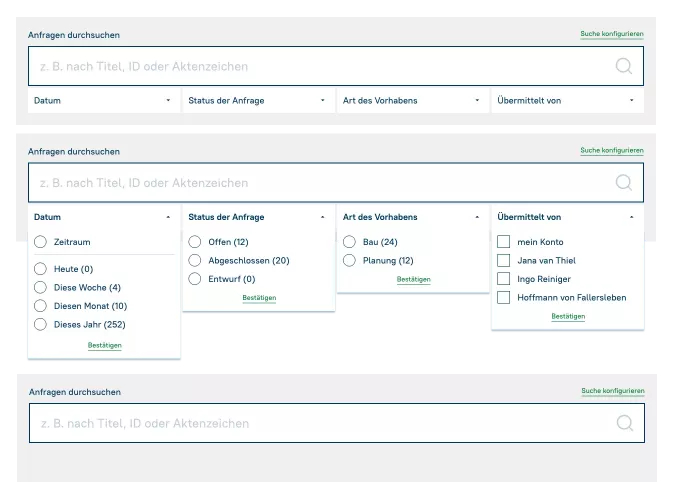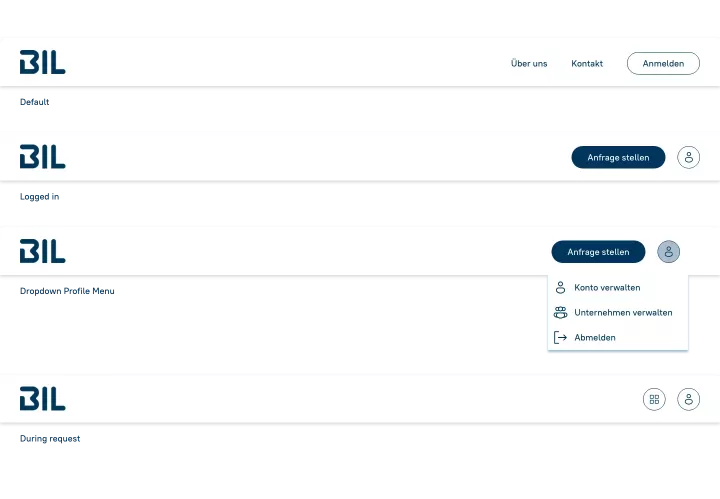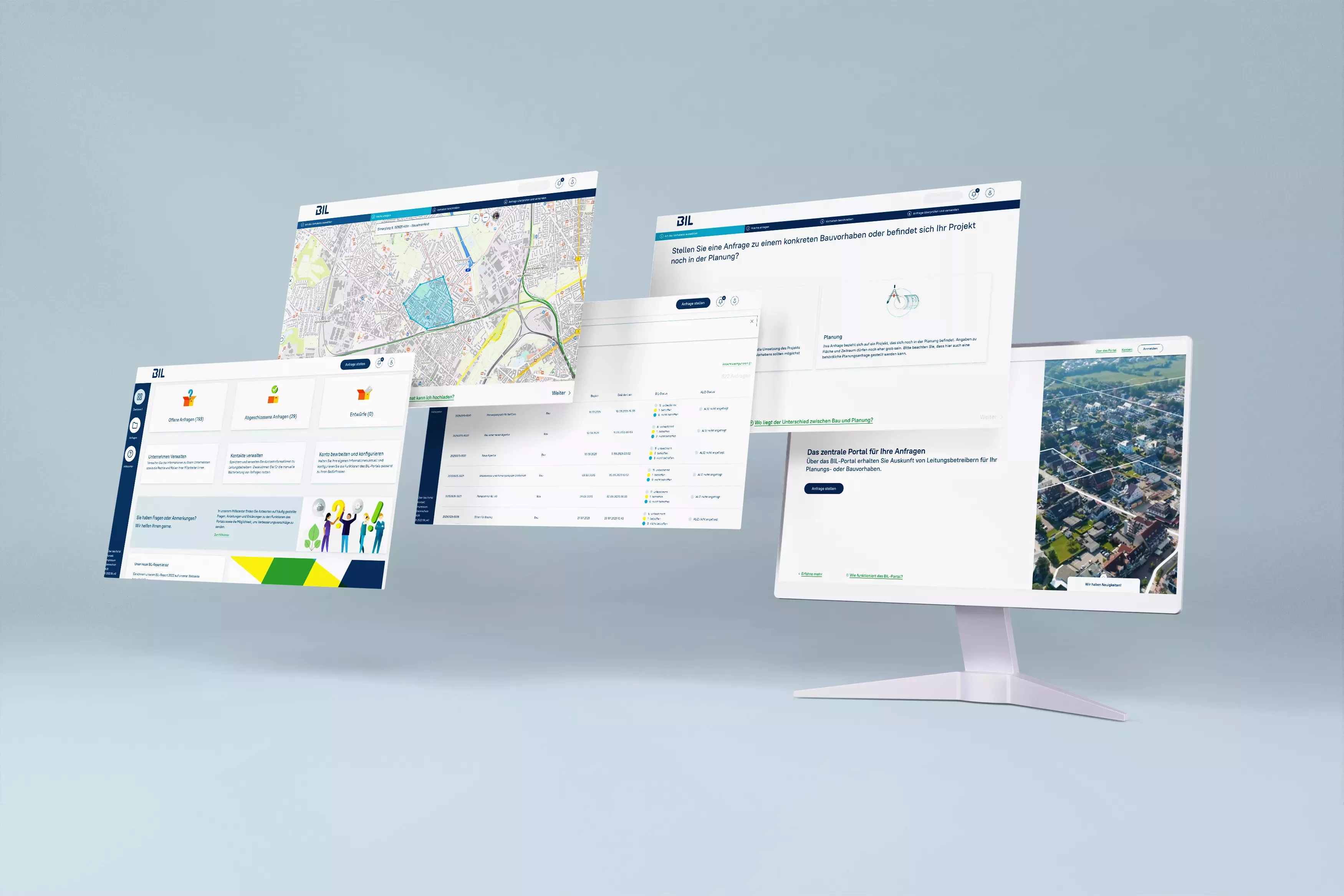
Background and objectives
The BIL portal is a central service platform of BIL eG that bundles pipeline information throughout Germany. Construction companies, planners, or private individuals with construction projects can submit inquiries here to find out which utility lines (e.g., gas, electricity, water, or telecommunications) run through the affected area. The portal not only facilitates research, but also ensures greater safety, transparency, and efficiency in the construction process.
Read more Read less
However, as usage increased, it became apparent that the existing structure and design no longer met the requirements of the growing target group. Users found the request process to be complex and confusing in some cases, particularly when registering, drawing areas, or verifying requests. The design was also inconsistent and did not provide a scalable basis for new functions. To ensure a user-friendly, modern, and expandable system in the long term, a comprehensive review and further development was necessary.
UX Review
In order to analyze the user-friendliness of the BIL portal in a targeted manner, we conducted a usability inspection. This is an established procedure in which experts examine an interactive system based on defined criteria in order to identify potential problems and deviations from recognized design principles.
The basis for this was provided by both common standards – such as Nielsen’s usability heuristics and the interaction principles according to DIN 9241-110 – and specific requirements of BIL eG. These criteria enabled a comprehensive analysis and evaluation of user-friendliness.
Read more Read less
The inspection itself involved repeated use of the application in different contexts. This enabled us to systematically identify deviations from the criteria and pinpoint specific usability problems.
The results were documented in a detailed report and discussed with the client. This led to specific recommendations for optimizing navigation and user guidance, eliminating identified usability issues, improving the user experience, and fundamentally revising the user interface with the aim of achieving simple, consistent, and understandable operation.
These findings formed the basis for the subsequent conception of the new interface design and design system.
Interface Design
Based on the UX review, we developed a consistent interface design: clearly structured layouts, defined interaction states, a set of recurring UI patterns, and a text/language concept for understandable help texts. Special attention was paid to restructuring the area for enquirers and designing a dashboard as a central entry point. The design is responsive, takes accessibility into account, and lays the foundation for modular components that can be easily expanded.

We have built up an extensive design library with numerous interface patterns for the BIL portal. It forms the basis for a consistent user experience, facilitates further development, and ensures that new functions can be integrated quickly and seamlessly.
Animated videos
Explanatory animations visualize complex processes and reduce training requirements and support requests. For the BIL portal, we produced short animations that demonstrate, among other things, how to draw areas, create a request, and use the dashboard step by step. The clips are short, concise, and can be used directly in the application as well as in training and onboarding materials.
Result
The BIL portal has been running successfully for several years with its new design and user guidance and was developed by project partner GEOMAGIC. Through close cooperation with BIL eG and GEOMAGIC, we were able to review existing structures, implement specific improvements, and transfer new functions into a consistent interface design.
We continue to provide ongoing support for the portal—because digital products are never “finished.” They must be regularly reviewed, adapted, and further developed in order to meet both new technical requirements and user expectations.
